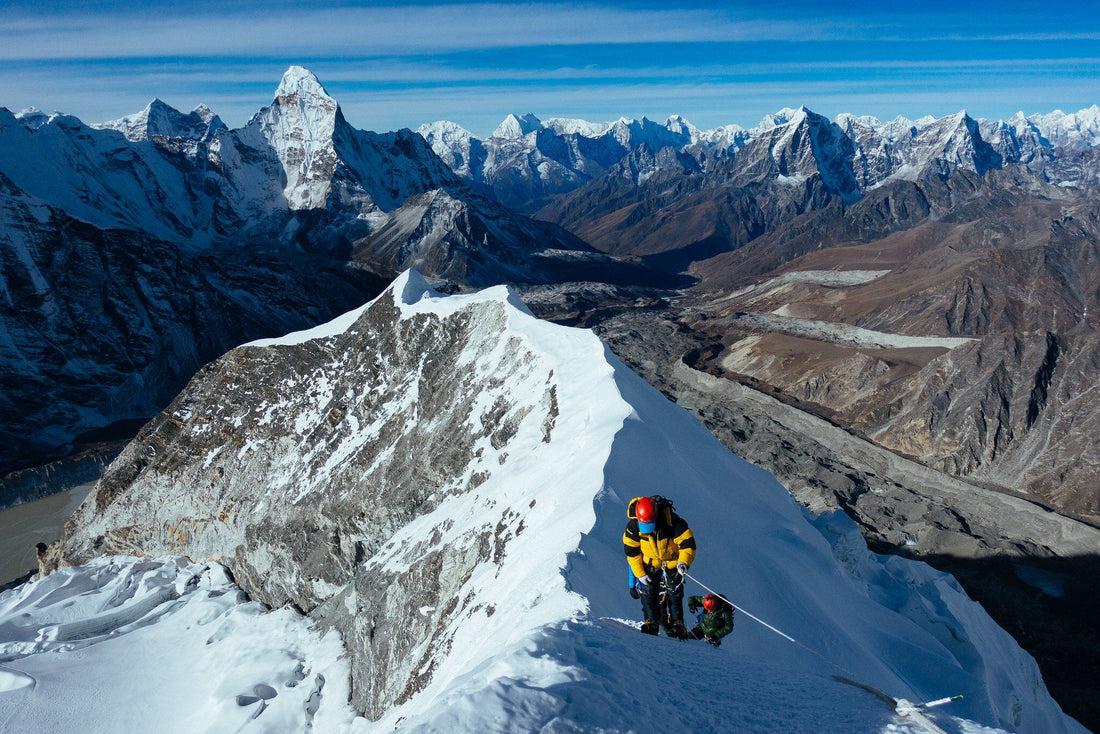
Granite Genes: The Science Behind 50+ Climbers' Superhuman Adaptations
Introduction: The Ageless Ascent – How Older Climbers Defy Biology
Rock climbing is often seen as a young athlete’s game, yet an increasing number of climbers over 50 are performing at elite levels. What’s their secret? Emerging research suggests that long-term climbers develop unique physiological and genetic adaptations that slow aging and enhance performance.
In this article, we explore the science behind superhuman climbers in their 50s, 60s, and beyond, uncovering how muscle memory, tendon resilience, and even DNA play a role in their enduring strength.
1. The Physiology of Aging Climbers: Why They Stay Stronger Longer
A. Muscle Retention & Slow-Twitch Fiber Dominance
-
Unlike most sports, climbing relies heavily on isometric strength (static muscle contractions), which declines slower with age than explosive power.
-
Long-term climbers maintain slow-twitch muscle fibers, crucial for endurance, better than non-climbers.
-
Studies show veteran climbers retain 90%+ of their grip strength well into their 50s.
B. Tendon & Ligament Adaptations
-
Decades of climbing thicken tendons, making them more resistant to injury.
-
Research on elite older climbers reveals enhanced collagen synthesis, keeping connective tissues supple.
C. Joint Preservation Through Controlled Loading
-
Unlike high-impact sports (running, basketball), climbing strengthens joints without excessive wear.
-
Controlled stress on cartilage may delay osteoarthritis in hands, elbows, and shoulders.
2. The Genetic Edge: Are Some Climbers "Built Different"?
A. The "Climber Gene" (ACTN3 & Beyond)
-
The ACTN3 gene, linked to explosive power, is less relevant in climbing than endurance genes like ACE I/D.
-
Some older climbers show unusual fast-twitch fiber retention, possibly due to genetic factors.
B. Telomeres & Longevity
-
Intense physical activity (like climbing) may slow cellular aging by preserving telomere length.
-
A 2022 study found that lifelong climbers had longer telomeres than sedentary peers.
C. Pain Tolerance & Neurological Adaptations
-
Veteran climbers develop higher pain thresholds from years of finger strain.
-
The brain rewires to optimize movement efficiency, reducing wasted energy.
3. Training Secrets of 50+ Elite Climbers
A. Focus on Recovery & Mobility
-
Older climbers prioritize active recovery (yoga, stretching) to maintain flexibility.
-
Eccentric training (controlled negatives) helps prevent tendon injuries.
B. Technique Over Raw Strength
-
Decades of experience lead to ultra-efficient movement patterns, conserving energy.
-
Many elite older climbers rely on balance and footwork more than brute force.
C. Mental Resilience & Risk Management
-
Years of climbing cultivate superior problem-solving skills on the wall.
-
Older climbers often climb smarter, not harder, avoiding burnout.
4. Can You "Train" These Adaptations at Any Age?
A. Starting Late? It’s Not Too Late
-
Studies show climbers who start after 40 can still achieve high grades (5.12+/V6+).
-
The key is consistent, injury-aware training.
B. Anti-Aging Benefits for Non-Climbers
-
Grip strength is a strong predictor of longevity—climbing helps maintain it.
-
Hanging exercises (like dead hangs) may mimic some benefits.
Conclusion: Climbing – The Ultimate Anti-Aging Sport?
Science confirms what veteran climbers already know: years of climbing reshape the body and brain in ways that defy typical aging. From genetic advantages to tendon resilience, older climbers are living proof that strength doesn’t have to fade with age.
Want to climb strong into your 50s and beyond? Focus on smart training, recovery, and technique—your future self will thank you.
